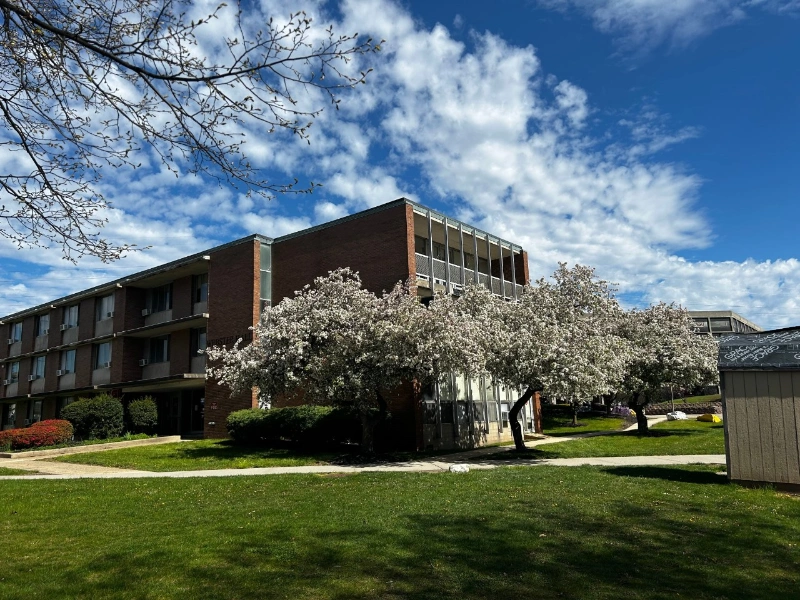What Is Junior College?

Going to college is one of the biggest milestones in your life, but with the rise of annual tuition costs, getting a higher education becomes more and more difficult. Luckily for students, higher education has broadened its opportunities by providing different ways of earning degrees, like certification programs, vocational training, and the most popular, junior college.
As a former junior college student, I can honestly say it was the best decision I made on my path to higher education. I earned my two-year associate degree in liberal arts and immediately dove into achieving bachelor's without taking a year off, and at the fraction of the cost! Societal pressures will have you believe it's a "lesser" form of education, but it has, in fact, provided a quality education to millions of students across the nation.
And I understand the term "junior college" can be misleading, but don't worry. Today I'm going to discuss details like:
- What junior is
- The benefits of junior college
- The admissions process
And more that can help you on your journey to college. It's important to remember the path to success isn't linear, and yours will look different than someone else. Nonetheless, junior college is a great stepping stone into the right direction. Let's get into it!
Bold.org is your one-stop shop for all college-related resources, including hundreds of scholarships! Sign up for a profile and start applying today.

Intro to Junior College
Junior college, also known as community colleges, are two-year institutions that offer affordable, accessible education to students. These colleges provide associate degrees, vocational training, and even transfer programs that allow students to continue their education at four-year universities. Known for their flexible class schedules and lower tuition costs, junior colleges are an excellent option for recent high school graduates, adult learners, and those looking to change careers or gain new skills.
Much like a four-year school, junior colleges offer students different degree programs that they can use to get into a four-year university. In fact, many junior colleges have transfer agreements with four-year colleges and universities, allowing students to transfer credits and complete four-year bachelor's degrees.
Junior colleges also offer lower tuition costs and fewer admission requirements compared to four-year universities.
Degree Programs
Like I mentioned, a secondary school, like junior colleges, offer different degree programs. Let's go over them:
- Associate of Arts (A.A.) - this degree is considered a transfer degree. It includes general education courses in liberal arts, science, and math.
- Associate of Science (A.S.) - this degree is also considered a transfer degree. Like the A.A., it includes general education courses in liberal arts, science, and math.
- Associate of Applied Science (A.A.S.) degrees - this degree focuses on specific career and technical fields, providing students with the skills and knowledge needed for entry-level jobs in those fields. Examples include programs in nursing, accounting, computer information systems, and culinary arts.
Recommended Reading: How Many Credits In An Associates Degree?
Benefits of Attending Junior Colleges
Don't let the pressures of going to a four-year university get to you. Going to junior college has its perks. Let's explore their benefits:
- Affordability: Students who attend junior college can save money on tuition and fees compared to attending a four-year university. Applicants are even eligible for federal financial aid, including grants and loans.
- Smaller Classes: Junior colleges put students in smaller class sizes to provide more personalized attention from instructors. These colleges are known to have smaller class sizes compared to four-year universities for this reason. Smaller class sizes help students build stronger relationships with their instructors and peers.
- Flexibility: Many junior colleges offer flexible schedules, including evening and online classes, making it easier for students to balance school, work and their personal schedules. Public junior colleges allow you to complete the first two years of a bachelor’s degree, plus more.
- Transfer Opportunity: Many junior colleges have transfer agreements with four-year universities, making it easy for students to transfer credits and complete a bachelor’s degree within the same amount of time it would take to graduate from a traditional four-year university--that is, if you stay committed and on schedule. Transfer credits can also help students complete their degree in a timely manner and improve their overall academic experience.
- Career-Focused Programs: Often times, junior colleges offer vocational programs to encourage students to get certifications and degrees in professional fields like healthcare, business administration and skilled trades.
Junior colleges are committed to providing quality educational experiences, as well as support those in pursuit of academic excellence.

Junior College Admission Process
Like traditional four-year universities, there is an admissions process when applying to junior college, and it's important to be just as prepared to do the ground work as you would for a university. The process is broken down in two parts:
High School Students
To go to a junior college, students must already have or be graduating with a high school diploma or have a GED equivalent. Some junior colleges may require your to placement tests to determine your course level, but that it is not a common practice. Here is what it looks like:
- High school diploma or GED equivalent
- Fill out application form
- Pay the application fee
- Send transcripts
Keep in mind: admissions requirements may vary depending on the college and program, but are generally less competitive than those for four-year universities. Junior colleges often have an open admissions policy, accepting almost anyone who applies.
Continuing Education Students
It's an amazing feeling when you go back to school, no matter how much time it's been since you've been in a classroom. That's why it's important for continuing education students to know what to expect for the admissions process. Though similar, the process for applying to junior college is slightly different.
Here is what you will need to complete:
- Send background information (high school transcripts, background check, full educational history, resume)
- Application form
- Pay the application fee
- Send transcripts
Be sure to check out the read on how to request college transcripts.
Financial Aid Options for Junior College Students
One of the benefits of junior colleges is the opportunity to still receive financial aid. And some institutions offer scholarships and other forms of financial aid to help students pay for tuition and fees, like:
- FAFSA (The Free Application for Federal Student Aid)
- Grants
- FSEOG (Federal Supplemental Educational Opportunity)
- Work Study
- Promise Program
- Federal Student Loans
- State Aid (in some states)
Students who attend junior college can also explore private loan opportunities, as well, but that should be the last resort. Especially since Bold.org offers hundreds of exclusive scholarships to help fund your education and leave you debt free. Apply to some today!
It's important to know junior colleges may also offer payment plans and other forms of assistance to help students manage the cost of attendance. Be sure to head over to your JC's financial aid office for more details.
NAIA School Considerations
The NAIA (National Association of Intercollegiate Athletics) is the association for small to mid-sized colleges and universities in the U.S. that organizes college-level athletic programs which may require student athletes to meet specific eligibility requirements.
When applying to an NAIA (National Association of Intercollegiate Athletics) school, student-athletes should consider the following:
1. Athletic Opportunities: NAIA schools offer competitive athletic programs with fewer restrictions than NCAA schools and oftentimes provide more playing time and earlier chances to contribute on teams.
2. Scholarships & Financial Aid: NAIA schools offer athletic scholarships, academic grants, and other financial aid options.
3. Recruitment Process: NAIA has a simpler, more direct recruitment process allowing coaches to contact athletes earlier and more frequently. This makes the recruitment process more flexible.
4. Eligibility: NAIA eligibility is determined by the NAIA Eligibility Center. Requirements include minimum GPA, standardized test scores, and core courses.
Student athletes who attend such colleges like junior college can also take advantage of athletic programs and other extracurricular activities. Be sure to check with your college for more details!

Frequently Asked Questions About What Junior College Is
What is junior college?
Junior college, also known as community colleges, are two-year institutions that offer affordable education to students. These colleges provide associate degrees, vocational training, and even transfer programs that allow students to continue their education at four-year universities. Known for their flexible class schedules and lower tuition costs, junior colleges are an excellent option for recent high school graduates, adult learners, and those looking to change careers or gain new skills.
Can I get financial aid opportunities for junior college?
Yes! Junior colleges offer scholarships and other forms of financial aid to help students pay for tuition and fees, like FAFSA (The Free Application for Federal Student Aid), grants, FSEOG (Federal Supplemental Educational Opportunity), work study and more! Don't forget: Bold.org offers hundreds of exclusive scholarships that can help fund your education and leave you debt free. Apply today!
What are some benefits of going to a junior college?
Going to a junior college has some benefits you can't ignore. For instance, affordability. Students who attend junior college can save money on tuition and fees and are even eligible for federal financial aid, including grants and loans. And with lower tuition costs, students can graduate with less debt--which is a the goal! Another benefit, smaller classes. Junior colleges provide students with smaller class sizes to provide more personalized attention from instructors. Smaller class sizes can also help students build stronger relationships with their instructors and peers. Other benefits include credit transfer opportunities, flexibility and career-focused programs.
Check out our most recent college-related articles, all researched and designed to solve your education problems.